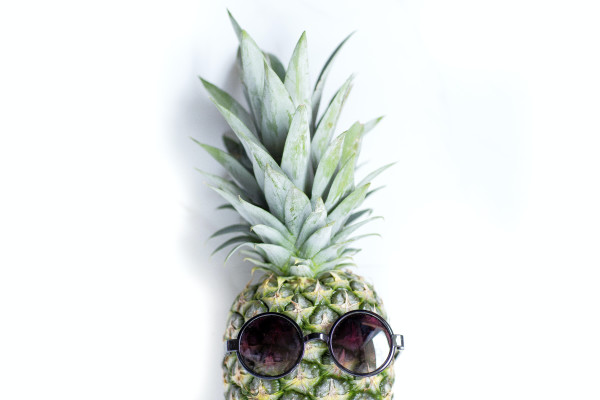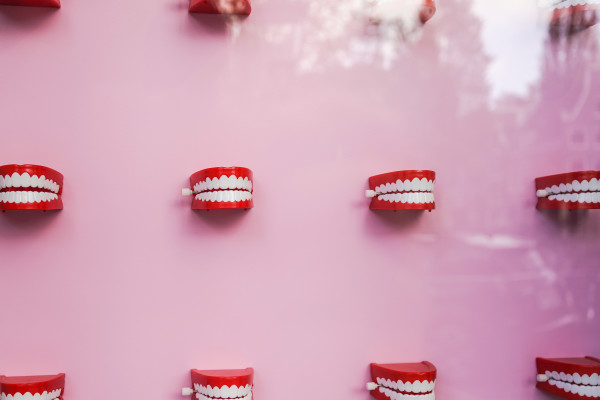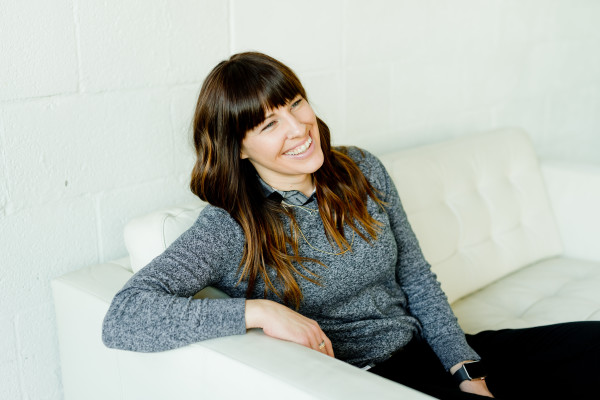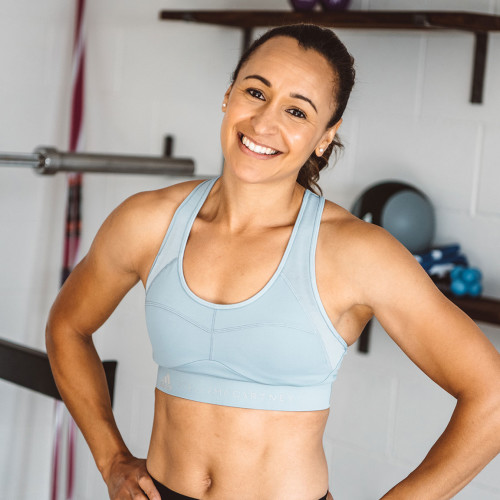What can I do about changing skin during perimenopause?
6 months ago
Perimenopause6 months ago
Perimenopause
If your skin is changing through perimenopause and you’re not sure what to do about it, we’ve got just the advice you need, thanks to a little help from expert perimenopausal dermatologist, Justine Hextall
Thought you’d left acne, flaking skin and angry red outbreaks back in your teenage years? During perimenopause, because your skin starts to respond to those changing hormones, it can mean that you experience awkward new skin problems out of the blue.
The good news is that you can fix your skin, as long as you know what to do. Enter expert dermatologist Justine Hextall , who tells us exactly why perimenopausal skin flare-ups happen, plus her 10 golden rules for what you can do to work with your skin during this lifestage…
During the perimenopause transition, “women experience a drop in oestrogen, but it’s typically not a slow and steady decline,” says Justine. “Our levels of reproductive hormones, such as oestrogen and progesterone, can peak and trough quite dramatically, which is what causes most of the unpleasant symptoms of perimenopause.”
It’s impossible to turn back the clock on ageing, but a few smart tweaks to your skincare shelf can keep dullness and dryness at bay
Considering our skin is the body’s largest organ, it’s no major surprise that our complexion can have a visible reaction to this perimenopausal hormone rollercoaster. Specifically, when our testosterone levels are peaking higher than oestrogen levels, our rate of skin exfoliation slows down and sebum production can increase too.
This process is completely natural but it can show up in our skin as any of the following concerns:
Sensitive skin: “You might find that your skin can no longer tolerate heavily fragranced products that weren’t previously an issue. This is because the pH of our skin barrier can change during perimenopause."
Acne-prone skin: “The imbalance between testosterone and oestrogen can manifest as oily skin and cause acne, with puss-filled spots and areas of the skin that are painful to touch,” says Justine. “As a result, women who have never experienced acne might suddenly develop acne in their 30s, 40s or 50s.”
Rosacea: Rosacea is a really common skin condition that causes flushing and visible blood vessels. “Many women don’t realise that it can be caused by applying traditional - and far too harsh - acne treatments to sensitive perimenopausal skin,” explains Justine.
Reduced skin elasticity: Some women might experience skin sagging and the appearance of fine lines and wrinkles during perimenopause. This is because a decrease in oestrogen can also cause collagen levels to drop.
Dryness: Thanks to - yep, you guessed it - decreasing oestrogen levels, our skin can also become less supple, smooth and soft over time.
Your skin is made up of lots and lots of layers and the skin barrier is the outermost layer. This acts as a shield from toxins like pollution and harmful UV sun rays.
“It was once assumed that the skin barrier was just an inert layer of dead skin cells, but it actually has a profound effect on our immunity,” says Justine. “The problem is that for years now, we've underestimated the skin barrier’s importance.”
When our skin pH changes due to rising and falling oestrogen levels, our all-important skin barrier becomes less effective: “Because of this, you might notice increased water loss (think dry and dehydrated skin) and your face may become more reactive to irritants and allergens.”
It’s not just a natural decline in oestrogen that can damage or weaken our skin barrier during the perimenopause transition. Too much sun exposure (which can happen over time), over-exfoliating, using harsh cleansers, taking extra-hot showers and stress and pollution can also have an impact.
Sensitive skin is a big warning sign, explains Justine, “and many women who think they have rosacea or highly sensitive skin actually have a broken skin barrier issue.”
If it stings to apply your usual products, your skin feels tight after cleansing or it’s flaking, dry, itchy or spotty, there’s a good chance that your skin barrier may need some TLC.
The key to supporting your changing skin is to work with it, rather than against it. It’s impossible to turn back the clock on ageing, but a few smart tweaks to your skincare shelf can keep issues like dullness, dryness and spots at bay.
1. Add new products slowly
“When perimenopause kicks in, many women slather on actives (naturally occurring chemicals) like AHA, BHA and retinol,” says Justine. “This means that they go from doing very little to their skin to applying really quite strong ingredients. Because of this, the skin erupts as it can’t cope.”
Actives can be useful for exfoliating the skin and boosting collagen, but to really benefit from them, it’s important to introduce them slowly so you don’t disrupt the skin barrier.
2. Use a gentle cleanser
Rather than going straight for the actives mentioned above, Justine believes that a good place to start is to build a hydrating skincare regime. “Cleanser is really important in skincare and we underestimate the importance of it. If the skin feels tight and dry after cleansing, then you’ve stripped the skin barrier,” she warns.
“Once you’ve disrupted the skin barrier, you’re on the back foot and it’s going to be very hard to catch up, even with the best moisturiser in the world.
“The answer is to opt for gentle oil or milk-based cleansers that nourish the skin.”
Try: Cetaphil Gentle Foaming Cleanser or Kate Somerville Goat Milk Cleanser
3. Skip the double-cleanse
Double cleansing has become a big trend on TikTok , but Justine believes that it’s not the best route for our skin, particularly when we’re perimenopausal.
A humectant is a substance that draws water into the skin, which is super important when we’re losing hydration during the perimenopausal period
“I'm not mad about using micellar water before going in with your cleanser,” says Justine, “and prefer people to use an all-in-one cream cleanser that removes makeup, plus a soft muslin cloth to remove the make-up. Double cleansing puts us at higher risk of disrupting that all-important skin barrier and removing essential moisture and natural oil.”
4. Drop on a vitamin C serum
Like oestrogen, Vitamin C is an amazing antioxidant, which protects us from harmful toxins that come into contact with our skin. Justine recommends applying a serum topically every morning for a natural, dewy glow.
Top tip: “If you're using a water-based serum, make sure to apply it before moisturiser because it will give you better penetration of the product.”
Try: SkinCeuticals C E Ferulic or The Inkey List Vitamin C Serum
5. Introduce a humectant
A humectant is a substance that draws water into the skin, which is super important when we’re losing hydration during the perimenopausal period.
“I like multi-complex hyaluronic acids which have a smaller molecule that penetrates deep into the skin and a bigger molecule that helps moisturise,” says Justine.
The key benefit of hyaluronic acid is its ability to retain moisture, giving you plump, supple and juicy skin. “I recommend dampening the face before applying the product as it helps to seal moisture in.”
Try: SkinCeuticals HA Intensifier Serum or The Ordinary Hyaluronic Acid 2% + B5
6. Seal it with ceramides
Ceramides are lipids that are naturally found in the skin barrier, so it makes sense that we’d want to add these skincare products to our bathroom cabinet.
“Ceramides mimic the fatty acids that we start to lose in the skin barrier, helping to curb water loss,” says Justine. “Often dull skin is just dehydrated skin, so I recommend ceramide-spiked skincare products to give us a lovely glow.”
Try: Paula’s Choice Omega+ Complex Serum or La Roche-Posay Toleriane Sensitive Moisturiser
7. Don’t skip the SPF
Protecting your skin from sun damage is one of the most effective ways to fight ageing - but not all sunscreen is made equal.
“Lots of sunscreens protect against UVB, but not all protect against UVA,” warns Justine. UVA rays can penetrate your skin more deeply and cause your skin cells to age prematurely. “They also cause issues like pigmentation and melasma, so it’s important to protect against them.”
She advises looking for a high-factor, broad-spectrum SPF that protects against UVA and UVB rays. “Don’t forget that UVA and pollution work together synergistically to cause pigmentation and damage to collagen, so if you live in a city, it’s even more important to follow this step.”
Try: La Roche Posay Anthelios UVMune 400 Invisible Fluid SPF50+ sun cream or Avene Very High Protection Cream SPF50+ sun cream
8. Eat for gut health
Every person has an internal ecosystem of bacteria in our bodies dubbed the microbiome. These microbes are constantly adapting to our environmental changes and our daily lifestyle habits can alter the composition of gut bacteria.
“There’s evidence to show that our microbiome experiences a shift around menopause,” says Justine, “and if the gut microbiome changes, it can also affect the skin.” Eating natural probiotic foods like kefir and kimchi, along with a high-fibre diet with lots of plant-based foods, can help to encourage a larger diversity of gut bacteria.
In the same way our skin might flare up from products, we may also start to react differently to foods. “If that’s the case with you, I’d advise keeping a food diary so you can see your triggers. Lots of women react to histamines in wine around the time of the perimenopause, so you may want to limit or cut your alcohol intake as part of this.”
9. Limit stress
Quality sleep is the foundation for good skin and a lack of it can increase your cortisol (stress-hormone) levels, putting you in a pro-inflammatory state. By limiting stress, it means that we are more likely to sleep better, which is also when our skin is repairing and regenerating.
To help you get a good night’s rest, Justine recommends limiting stress with meditation and yoga and prioritising a good sleep routine so your skin has the best chance of recovering overnight.
10. Keep it simple
Finally, apps like TikTok are full of complicated skincare routines with ‘buzzword’ ingredients and multiple time-consuming steps. “Skincare has become more affordable, so some people are putting on everything, which is really disrupting the skin barrier I talked about earlier. Just because something's available, it doesn't mean you have to use it,” urges Justine.
Instead, a simple approach to perimenopausal skincare is best: a gentle cleanser, vitamin c serum, a humectant, a ceramide and SPF. “I'm not a big fan of putting a chemistry set in your bathroom,” she adds. “Good skin doesn’t have to take hours or break the bank.”
 Cycle syncing
Cycle syncing Perimenopause
Perimenopause Perimenopause
Perimenopause Perimenopause
PerimenopauseSign up to learn everything you need to know about CycleMapping, plus how you can live better and feel better through optimising your fitness to you.
This website uses cookies to ensure you get the best experience on our website. Learn more

Sign up for the very latest news on women's fitness, health and hormones, plus be the first to receive exclusive offers and extras